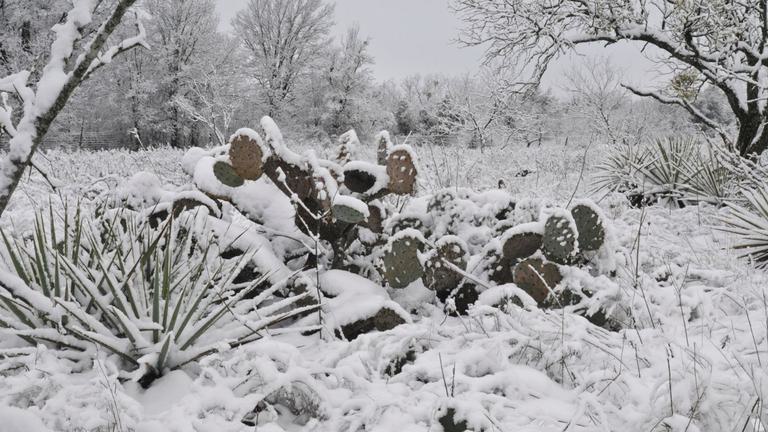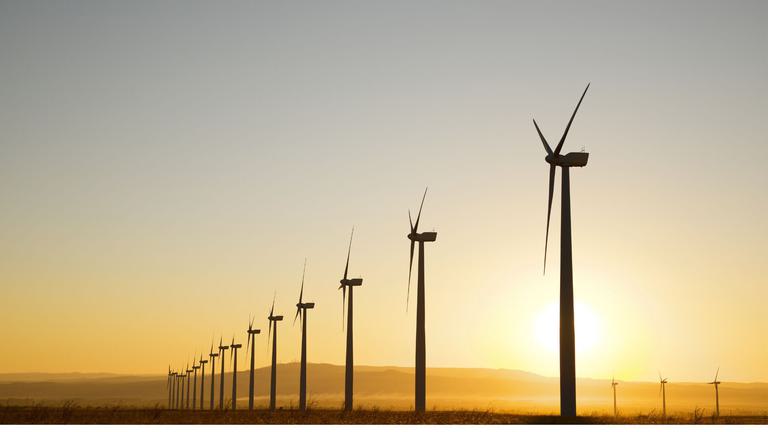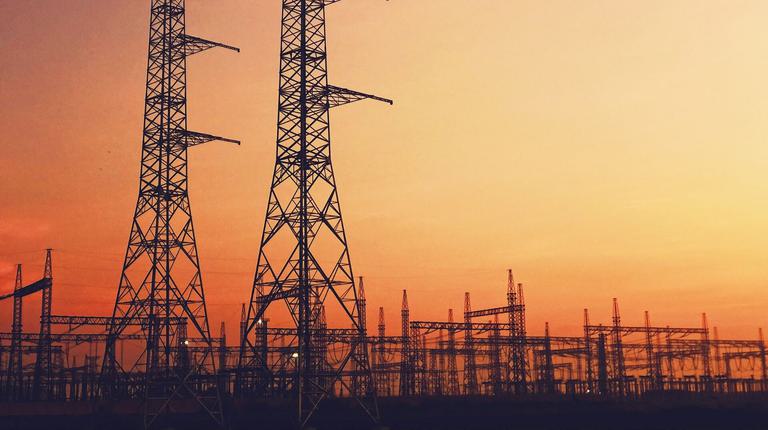Blogs
A Wake-Up Call for Texas' Energy Infrastructure: How Chiron and the Texas Energy Fund are Working to Strengthen the Grid
Chiron Financial LLC has released a white paper on Texas’ energy vulnerabilities exposed by Winter Storm Uri and efforts to strengthen grid resilience. It highlights the Texas Energy Fund’s role in modernizing power generation and enhancing reliability. Chiron is helping clients secure funding for projects that will build a more resilient, sustainable energy future.

The week of January 20th a rare snowstorm along the US Gulf Coast was a stark reminder that we are approaching the 4th anniversary of Winter Storm Uri, which ravaged much of Texas for several days in February 2021.
Winter Storm Uri exposed critical vulnerabilities in the state’s energy infrastructure, leading to widespread power outages, blackouts, and a humanitarian crisis. According to the Electric Reliability Council of Texas (ERCOT), this severe winter storm caused nearly 4.5 million homes and businesses in Texas to lose power, with some outages lasting for several days. The storm’s impact was catastrophic. Losses in Texas were estimated to be between $80 billion and $130 billion, according to the Texas Comptroller’s office. Around 25% of the state’s power generation capacity was offline at the peak of the storm, primarily due to failures at natural gas plants and a lack of weatherization (Source: ERCOT, Texas Comptroller, “Winter Storm Uri: Economic Impact Report,” 2021).
In response to these vulnerabilities, Chiron Financial remains deeply committed to helping Texas recover and strengthen its energy infrastructure. The storm exposed critical vulnerabilities in the grid, including inadequate weatherization, overreliance on natural gas, and a lack of flexibility in response to extreme weather. Chiron is working with our clients, in cooperation with the Texas Energy Fund (TEF), to add significant new capacity to the grid, ensuring a more resilient and reliable energy future for Texans.
TEF was established by the Texas Legislature through Senate Bill 2627, the Powering Texas Forward Act, to address the challenges exposed by Winter Storm Uri. The fund’s goal is to improve grid resilience, reliability, and modernize infrastructure, ensuring that Texans have access to reliable and affordable electricity in the future. Chiron’s financial expertise and deep industry knowledge in energy, oil & gas, and power sectors have helped our clients secure critical funding for their infrastructure projects.

Key Objectives of the Texas Energy Fund: Safeguarding the Future of Texas’ Power Grid
Building a More Reliable and Resilient Grid to Meet Growing Demands
- Increase grid reliability: By supporting the construction, modernization, and maintenance of electric generation facilities, the TEF seeks to ensure that Texans have access to reliable and affordable electricity.
- Enhance grid resilience: The fund aims to improve the ability of the Texas grid to withstand extreme weather events, such as winter storms, hurricanes, and heatwaves.
- Promote grid modernization: The TEF supports the integration of advanced technologies, such as energy storage and demand response, into the Texas grid.

TEF Funding Programs Empowering the Next Generation of Energy Infrastructure
Targeted Investments in Dispatchable Generation, Grid Enhancements, and Emergency Preparedness
- In-ERCOT and Out-of-ERCOT Generation Loan Programs: These programs provide low-interest loans to support the construction or upgrade of dispatchable electric generation facilities within and outside the Electric Reliability Council of Texas (ERCOT) region. TEF will provide up to $10 billion in loans with a goal to add 10,000 megawatts of new gas-fired power generation to the grid in Texas.
- Grid Enhancements Grant Program: This program offers grants to fund projects that specifically enhance grid resilience and reliability, such as weatherization upgrades, transmission line improvements, and grid modernization initiatives.
- Backup Power Package Program: This program provides grants for the installation of backup power sources at critical facilities, such as hospitals, nursing homes, and emergency shelters.

Impact of Winter Storm Uri: Lessons Learned and Critical Gaps in Energy Infrastructure
How the Storm Exposed Vulnerabilities and Accelerated the Need for Reform
Winter Storm Uri highlighted several critical vulnerabilities in the Texas energy infrastructure, including:
- Inadequate weatherization of power generation facilities:Many power plants, particularly those fueled by natural gas, were not adequately winterized, leading to widespread outages.
- Gas transmission disruptions: The state’s power grid is heavily reliant on natural gas, which is vulnerable to disruptions during extreme weather events, especially if the gas transmission companies are allowed to buy interruptible power.
- Lack of grid flexibility: The Texas grid lacked sufficient flexibility to respond to the sudden loss of generation capacity during the storm.
Chiron’s work with the TEF directly addresses these vulnerabilities, helping fund projects that modernize infrastructure, weatherize power plants, and diversify Texas’ energy mix to avoid future disruptions.
Lessons Learned from Winter Storm Uri: Shaping the Future of Texas’ Energy Resilience
Key Takeaways for Policy, Infrastructure, and Grid Modernization to Prevent Future Crises
The experience of Winter Storm Uri has provided valuable lessons for policymakers and energy stakeholders, including the importance of:
- Weatherizing critical infrastructure: Ensuring that power generation facilities, transmission lines, and other critical infrastructure are adequately weatherized to withstand extreme weather events.
- Diversifying the energy mix: Reducing reliance on any single fuel source and increasing the use of renewable energy sources, such as wind and solar power.
- Investing in grid modernization: Upgrading the grid to incorporate advanced technologies, such as energy storage and demand response, that can improve grid flexibility and resilience.
- Strengthening emergency preparedness: Developing and implementing robust emergency preparedness plans to ensure that the state is prepared to respond to future extreme weather events.

Shaping a Resilient Future for Texas’ Power Grid
Chiron stands at the forefront of Texas’ energy transformation, bringing an unparalleled depth and breadth of financial expertise to every project we support. With a leadership team composed of seasoned professionals — including investment bankers with Wall Street experience, leading commercial bankers, private equity and debt investors, and former CEOs and CFOs from multiple industries, Chiron is uniquely equipped to support the state through its efforts to modernize and strengthen its power grid.
Our diverse experience spans across sectors such as energy, oil & gas, chemicals, agriculture, healthcare, consumer products, manufacturing, and industrial services, allowing us to offer customized financial solutions that align with the specific needs of each project. At Chiron, we make it our business to understand your business, ensuring that every initiative we support delivers not only immediate results but also long-term impact.
As Texas moves forward with the Texas Energy Fund and other grid-enhancement initiatives, Chiron’s deep industry knowledge and strategic expertise will continue to support investments that enhance grid resilience, reliability, and capacity. With a proactive approach and a commitment to innovation, we are dedicated to helping Texas build a robust and sustainable energy future, capable of weathering the challenges of tomorrow.

Meet Our Authors

Chris Mudd
Managing Director
Mr. Mudd has held multiple senior management roles in the petrochemicals industry, including CEO, COO and CRO.

Michael Miller
Managing Director
Mr. Miller brings over 30 years’ experience in investment banking, private equity and structured finance in multiple sectors, including energy and energy transition.